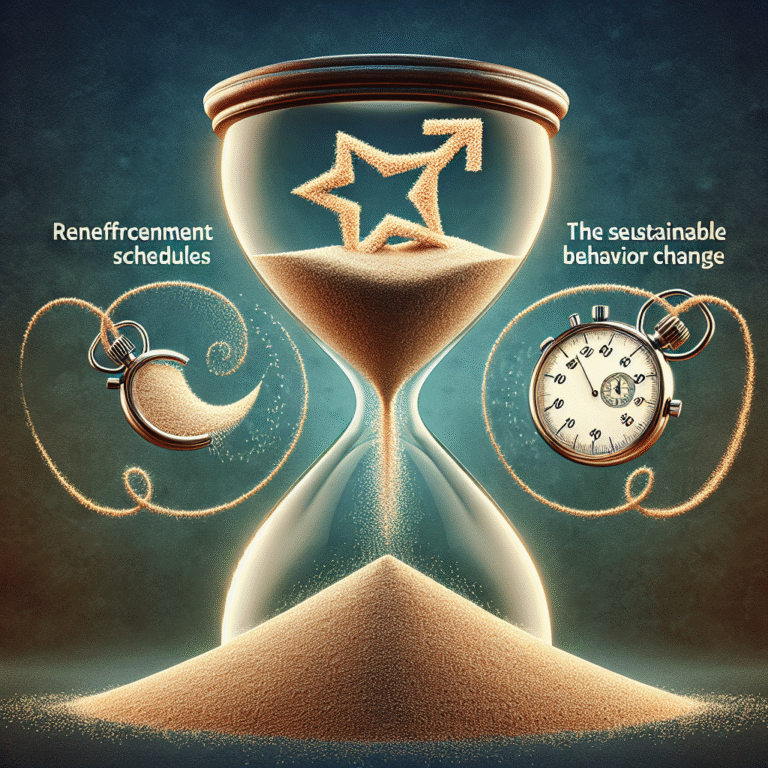
Introduction
Imagine you’re at a bustling café, reading the menu. You see the word "blue," but your eyes are drawn to the vibrant red ink that spells it out. Confusing, right? This simple yet perplexing scenario encapsulates the essence of Mind Over Matter: How the Stroop Effect Reveals Insights into Human Cognition. Understanding this cognitive phenomenon can illuminate the complex interactions of attention, perception, and emotions in our daily lives.
The Stroop Effect highlights how our brains interpret conflicting information, showcasing the struggle between automatic and controlled processes of thought. In understanding the dynamics of this effect, we can gain valuable insights into how we can optimize cognitive functions both in our personal and professional lives.
In this extensive exploration, we will dive deep into the intricacies of the Stroop Effect, examining its implications and relevance in various fields, including psychology, education, and cognitive science. So, let’s embark on this journey to unravel the profound ways our cognition shapes our experiences.
The Stroop Effect: A Brief Overview
What is the Stroop Effect?
The Stroop Effect was first documented by psychologist John Ridley Stroop in 1935. He introduced a simple task where participants had to name the color of the ink used to print words while ignoring the actual names of the colors. For instance, when "RED" is printed in blue ink, the challenge lies in resisting the urge to say "red."
This phenomenon demonstrates how our cognitive processes can conflict, exemplifying the concept of automaticity in cognitive function. Automatic processes, like reading, are so ingrained in us that they often override controlled processes, like naming colors. The result? A fascinating peek into our minds where intention meets instinct.
The Mechanics Behind the Stroop Effect
The Stroop Effect operates on two primary cognitive functions: attention and impulse control. When faced with conflicting stimuli, our brains experience a bottleneck where the automatic and controlled processes vie for attention.
- Attention: The capacity to focus on one aspect while filtering out irrelevant information.
- Impulse Control: The ability to suppress automatic responses in favor of deliberate thought.
Understanding how these two work together reveals essential insights into our cognitive complexity, providing a glimpse of how we process, interpret, and respond to conflicting information in everyday situations.
Case Studies: Real-world Applications of the Stroop Effect
Case Study 1: Clinical Psychology and Mental Health
One of the most intriguing applications of the Stroop Effect analysis is in the field of psychology, particularly in diagnosing and understanding various mental disorders. Research indicates that individuals suffering from anxiety and depression exhibit a more pronounced Stroop Effect, highlighting their difficulty in filtering out emotional stimuli.
Analysis: This phenomenon suggests that heightened emotional states can significantly impact cognitive functions, leading to a greater interference effect. Clinicians can use these assessments to gauge the severity of a patient’s condition and tailor intervention strategies accordingly.
Case Study 2: Education and Learning Environments
The Stroop Effect extends its relevance to educational settings, too. A study was conducted where students performed tasks that involved color naming while under timed conditions. Results indicated that students who could better regulate their attentional focus were more successful in completing the tasks accurately.
Analysis: This reinforces the importance of teaching impulse control and attention regulation in schools. By understanding Mind Over Matter: How the Stroop Effect Reveals Insights into Human Cognition, educators can develop curricula that enhance student focus and minimize cognitive interference.
Case Study 3: Workplace Efficiency
In corporate environments, cognitive training that utilizes the principles behind the Stroop Effect has been shown to enhance employee productivity. For instance, a company introduced a color-naming game during team-building exercises. Those who practice impulse control became better at handling multitasking situations, demonstrating clearer communication and decision-making processes.
Analysis: Organizations can leverage understanding from the Stroop Effect to create environments that foster greater employee efficiency. Encouraging training exercises that strengthen cognitive flexibility can lead to a more dynamic and effective workplace.
The Science of the Stroop Effect: A Closer Look
The Neural Basis of the Stroop Effect
Research has found that the Stroop effect activates certain areas of the brain, most notably the anterior cingulate cortex (ACC), which is responsible for error detection and emotional regulation. Neuroimaging studies reveal that when individuals struggle to resolve the conflict between word meaning and print color, the ACC exhibits increased activity.
Table: Areas of the Brain Involved in the Stroop Effect
| Brain Area | Function |
|---|---|
| Anterior Cingulate Cortex | Error detection, emotional regulation |
| Prefrontal Cortex | Decision-making, impulse control |
| Parietal Lobes | Attention allocation |
Understanding the neural underpinnings of the Stroop Effect provides crucial insights into how our brains manage competing stimuli, shedding light on various cognitive processes that govern our interactions.
The Impact of Age and Cognitive Decline
Research has shown that age can influence the severity of the Stroop Effect. Older adults often exhibit increased difficulty in tasks involving cognitive interference, suggesting a decline in attentional resources.
Analysis: This insight is important in both clinical and caregiving scenarios, as it stresses the necessity for interventions that promote cognitive health in aging populations.
Mind Over Matter: Application of the Stroop Effect in Daily Life
Enhancing Focus and Productivity
With an understanding of the Stroop Effect, individuals can strategically enhance their focus. Techniques such as mindfulness meditation can improve impulse control and attention management. Research indicates that mindfulness can mitigate the interference observed in Stroop tasks, fostering better cognitive clarity.
Decision-making in High-Stress Situations
Using the lessons from the Stroop Effect, individuals in high-pressure roles (like emergency responders) can train themselves to manage conflicting information efficiently. Simulation exercises that mimic high-stress environments can help develop quicker, more accurate decision-making skills.
Conclusion
In our exploration of Mind Over Matter: How the Stroop Effect Reveals Insights into Human Cognition, we have navigated the intricacies of this captivating psychological phenomenon. We’ve uncovered how it manifests in everyday life, from education to workplace dynamics, and even mental health. By studying the complexities of attention and impulse control, we can not only improve our cognitive abilities but also enhance our understanding of human behavior in challenging situations.
As we conclude, let us keep in mind that recognizing the conflict between our thoughts and actions – the very heart of the Stroop Effect – empowers us. By fostering awareness and honing our cognitive skills, we can master the challenges of our overlapping realities and transform conflicts into opportunities for growth.
FAQs
1. What does the Stroop Effect reveal about cognitive functions?
The Stroop Effect highlights the struggle between automatic and controlled cognitive processes, demonstrating how our brains manage conflicting information.
2. How can the Stroop Effect be applied in educational settings?
Educators can leverage the insights gained from the Stroop Effect to strengthen attention regulation and impulse control in students, leading to improved academic performance.
3. Is the Stroop Effect applicable to stress management strategies?
Yes, understanding the Stroop Effect informs strategies for managing stress, as individuals can learn to regulate their attention more effectively during high-stress situations.
4. Can the Stroop Effect be used to assess mental health?
Absolutely. The pronounced Stroop Effect can indicate emotional disturbances in individuals, making it a valuable tool in clinical assessments and treatment planning.
5. How can individuals improve their cognitive control?
Practices like mindfulness meditation, cognitive training exercises, and engaging in tasks that require flexibility in thought can enhance cognitive control and minimize interference effects.
By employing the insights gleaned from Mind Over Matter: How the Stroop Effect Reveals Insights into Human Cognition, readers can better navigate the intricate tapestry of human thought and behavior, turning everyday challenges into pathways for success.














